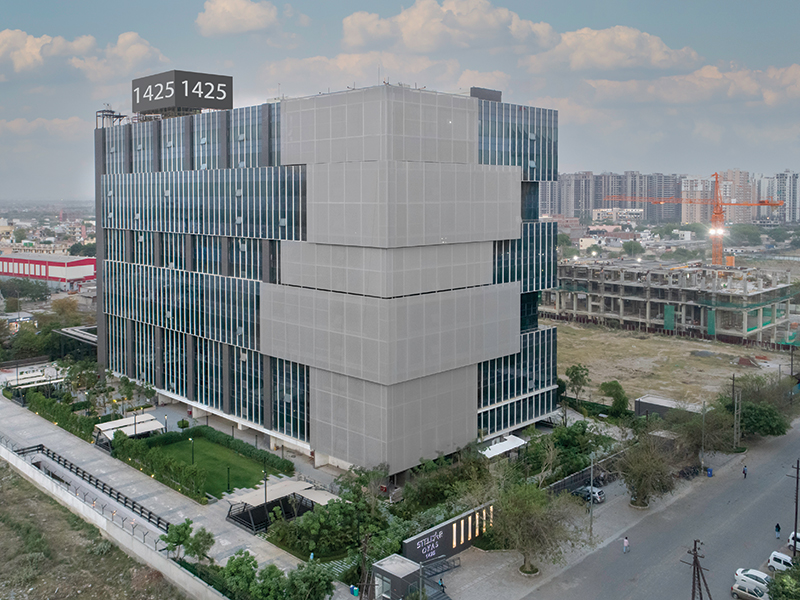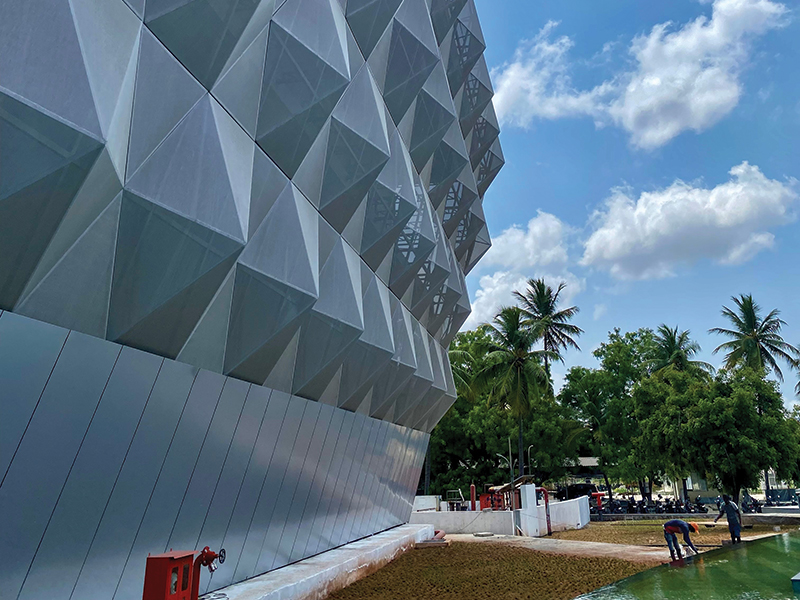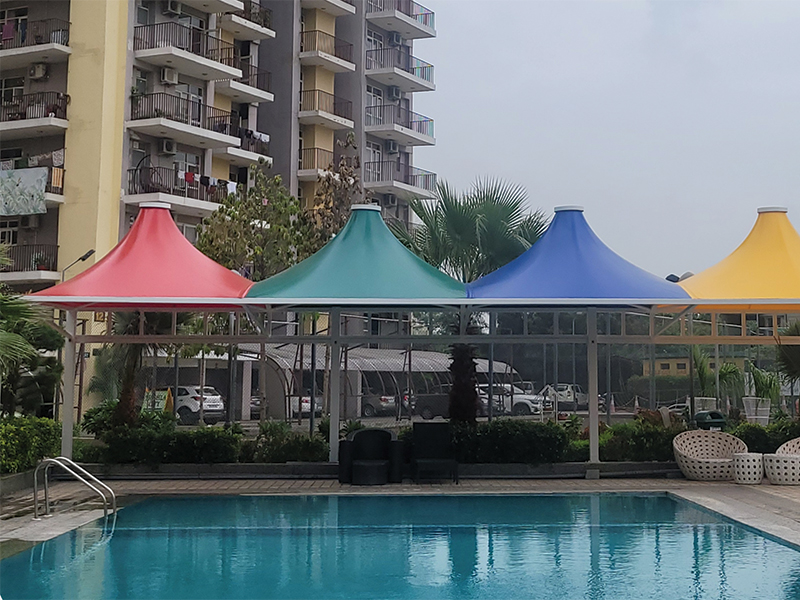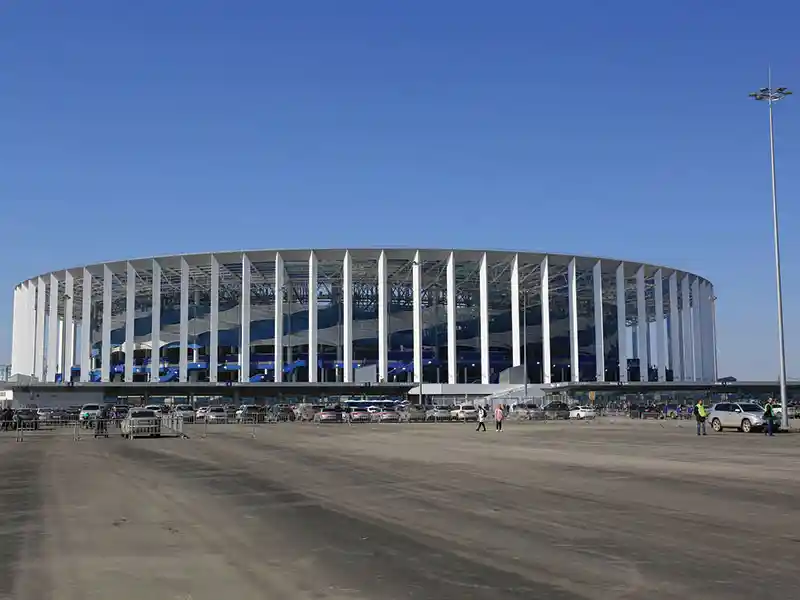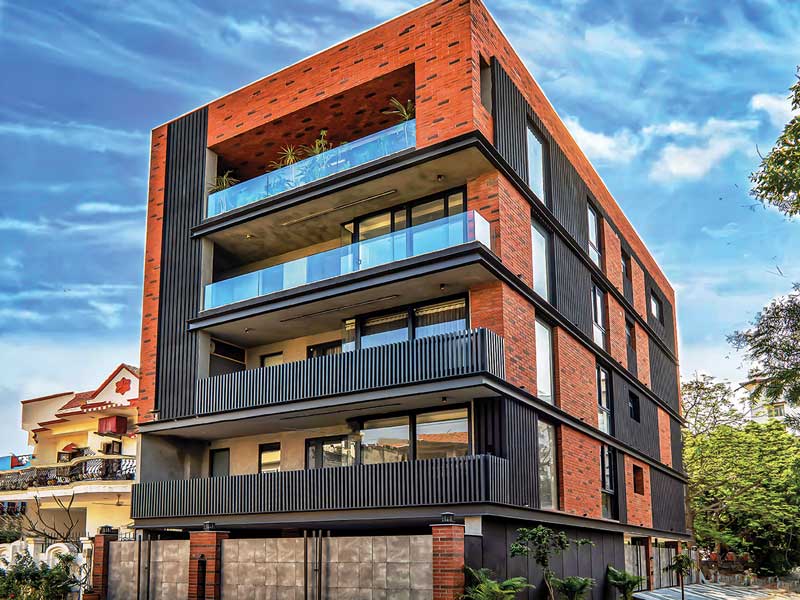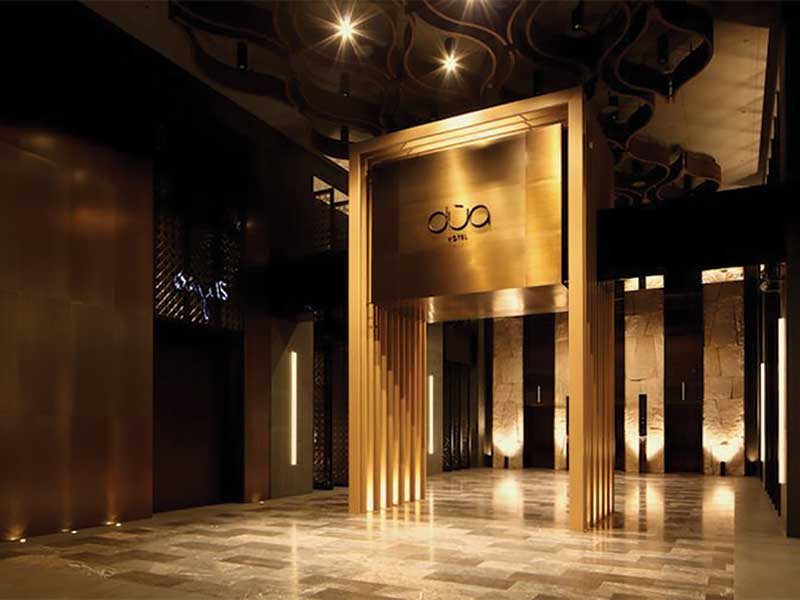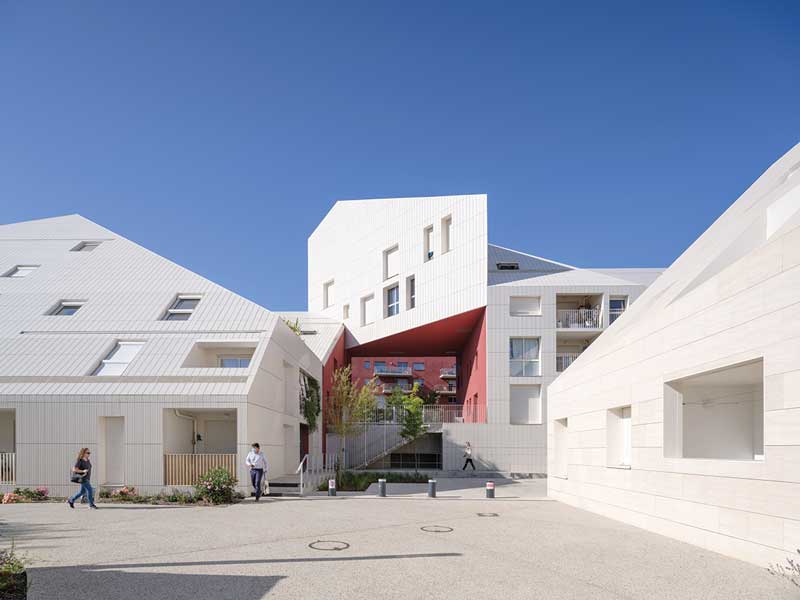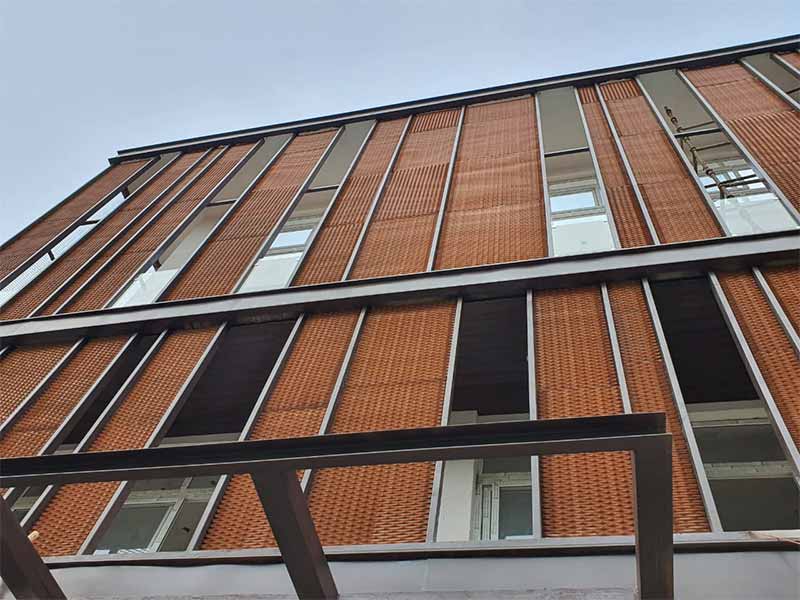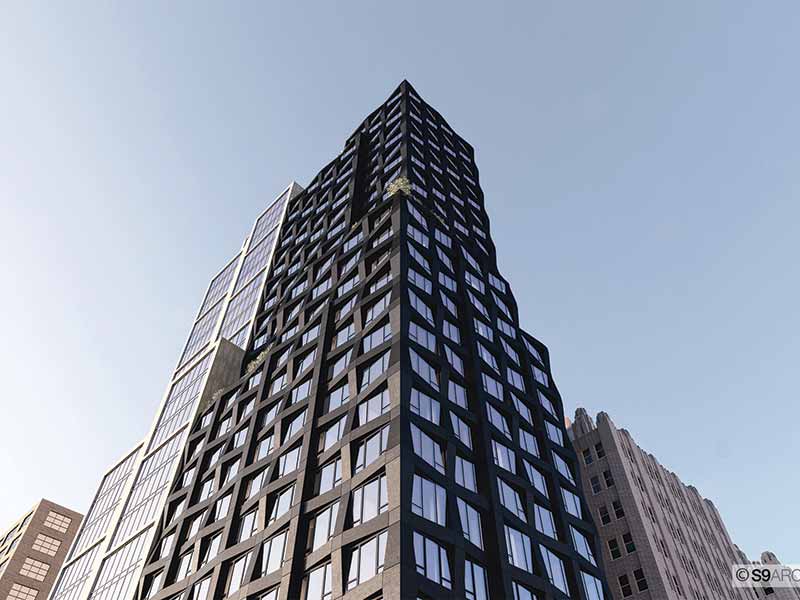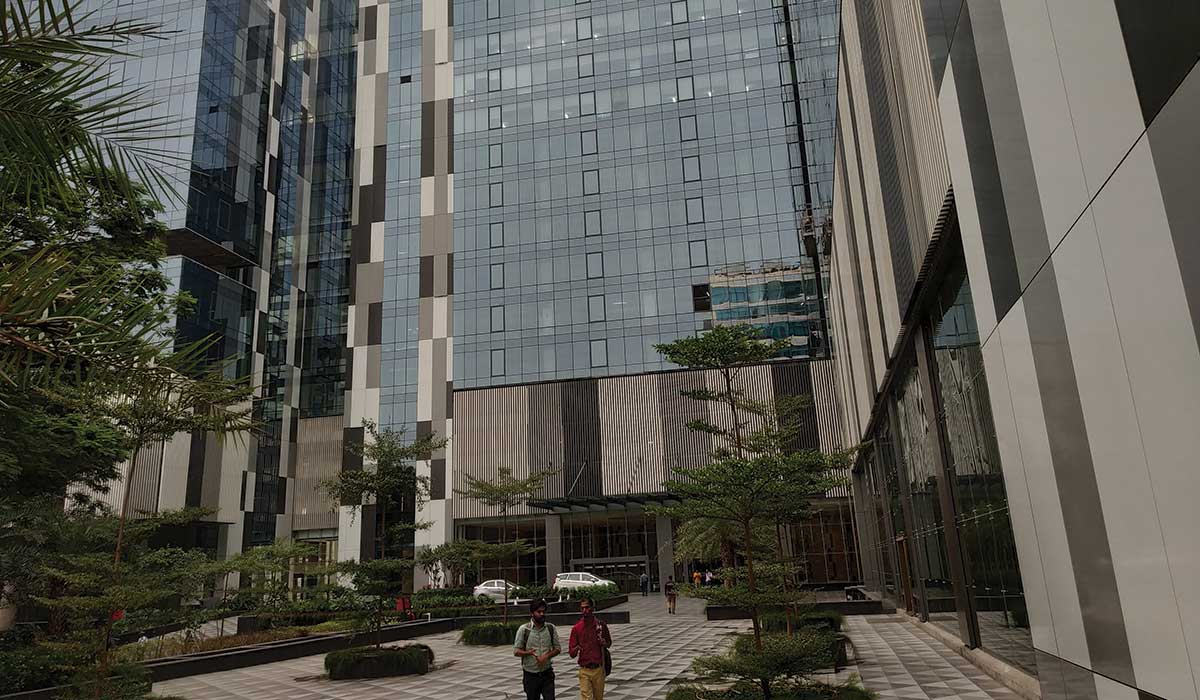 IT 4 commercial building at NESCO complex Mumbai with solid aluminum façade.
IT 4 commercial building at NESCO complex Mumbai with solid aluminum façade.IT4 office complex at NESCO in Mumbai is a recently completed high-rise building. It has a façade of unitized glazing and solid aluminum façade in the dead areas. The architect has chosen especially large panels which have been made in 2mm solid aluminum sheets of series 5000 (chemical composition uni en 573-3 1996 norm) of European origin and supplied by Saflow Products Pvt Ltd. A total of 18000 sqm of sheets were used to create the fire complaint façade. The large size panels can only be done in two metals i.e. stainless steel and aluminum. However, since solid colors were required for the aesthetics, aluminum panels were chosen.
IT 4 commercial building at NESCO complex in Mumbai has a solid aluminum façade. We want our buildings to be safe and we take all precautions to eliminate any instance of fire. In case a fire does occur due to human error, it will not spread through the facade etc. On the other hand, ACP can be lethal in case it catches fire.
Sasidharan Nair, Head Projects & Estate, NESCO, and former Sr. VP - Projects & Engineering at international hotel groups
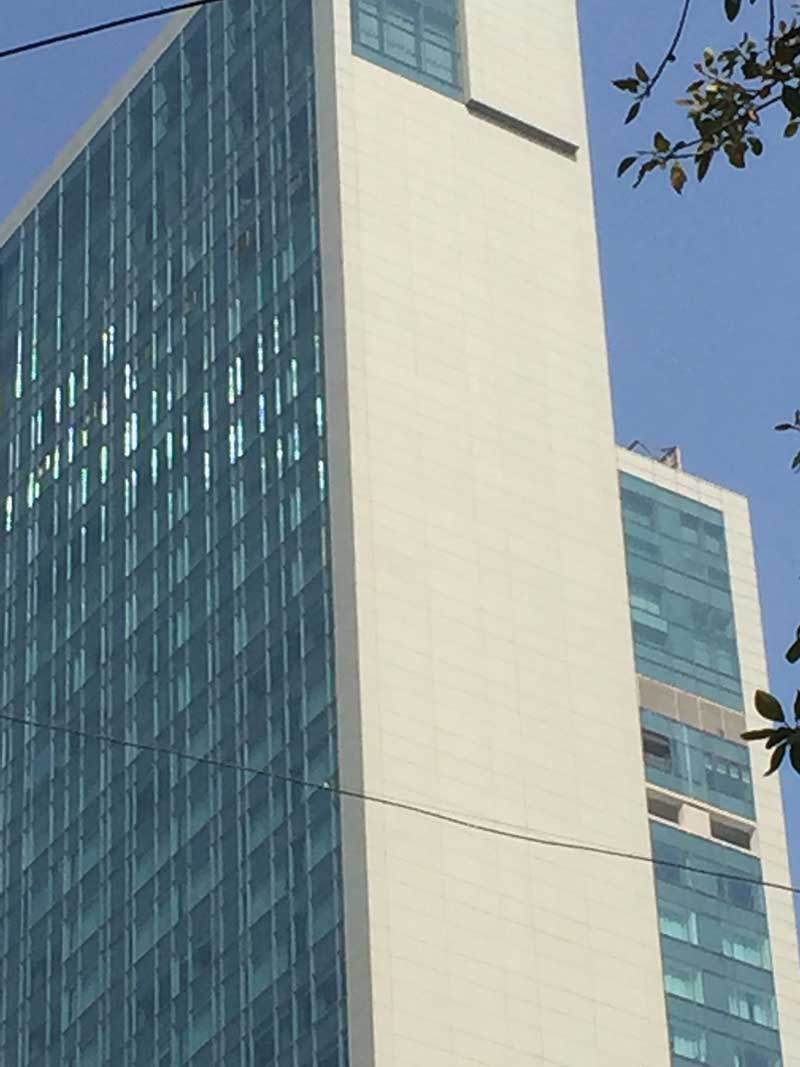 St Regis Hotel in Phoenix mills with solid aluminum façade.
St Regis Hotel in Phoenix mills with solid aluminum façade.St. Regis Hotel, a high rise building in Phoenix Mills, Mumbai, has a total façade of approx 17000 sqm. The building was completed in 2009-10 when the threat of ACP as a façade material was not so apparent, yet the promoters and architects of the project thought it wise to spend that extra bit extra and make a fire-safe façade.
Any metal, whether stainless steel, copper, zinc, or aluminum, creates value by being almost everlasting and can be compared to stone architecture of the previous centuries. This is very good news for the future of architecture. In terms of sustainable architecture, solid aluminum is the right material because it has a 100% end of life value. Who knows by the time the building has surpassed its economic worth, the aluminum façade would have paid for its own cost investment due to rising costs over the period?
Solid aluminum sheets come in different alloys: The ACP always used a lower grade alloy downward of 3000 series but solid aluminum goes up to 5000 series which gives it a much higher strength (due to higher magnesium content) compared to ACP, which is a much lower grade. Solid aluminum is as versatile as ACP in terms of workability and aesthetics and even better in terms of the physical abuse it can take. ACP, on the other hand, is vulnerable to impact due to its lower grade aluminum skin and soft plastic core, especially when considered for heights of up to 4 m from ground, where all wear and tear happens due to pedestrian and vehicular movements. This, however, is now changing as solid aluminum offers high impact resistance in comparison to ACP. This is also because ACP uses 0.5mm thick aluminum as its outer skin while solid aluminum starts with 2mm and goes up to 6mm thickness for very high wind load applications in super high-rise buildings.
When it comes to working with solid aluminum versus ACP or any other metal façade, solid aluminum is a clear winner. Cutting and bending aluminum is far easier compared to other metals. Here, the cost of façade and workability goes hand in hand. For instance, if you are planning to have a copper façade you will need to increase the thickness to at least 2 mm to get large size stable panels. But in comparison to aluminum of 2mm thickness, the cost (just by density of weight and metal market price) becomes 6 times that of aluminum! Hence, only very premium projects would use it for their façade. Stainless steel on the other hand needs specialized machines for cutting and bending in comparison which becomes a limitation of resource availability and is also costly in weight and metal price when compared to the same thickness of aluminum sheets.
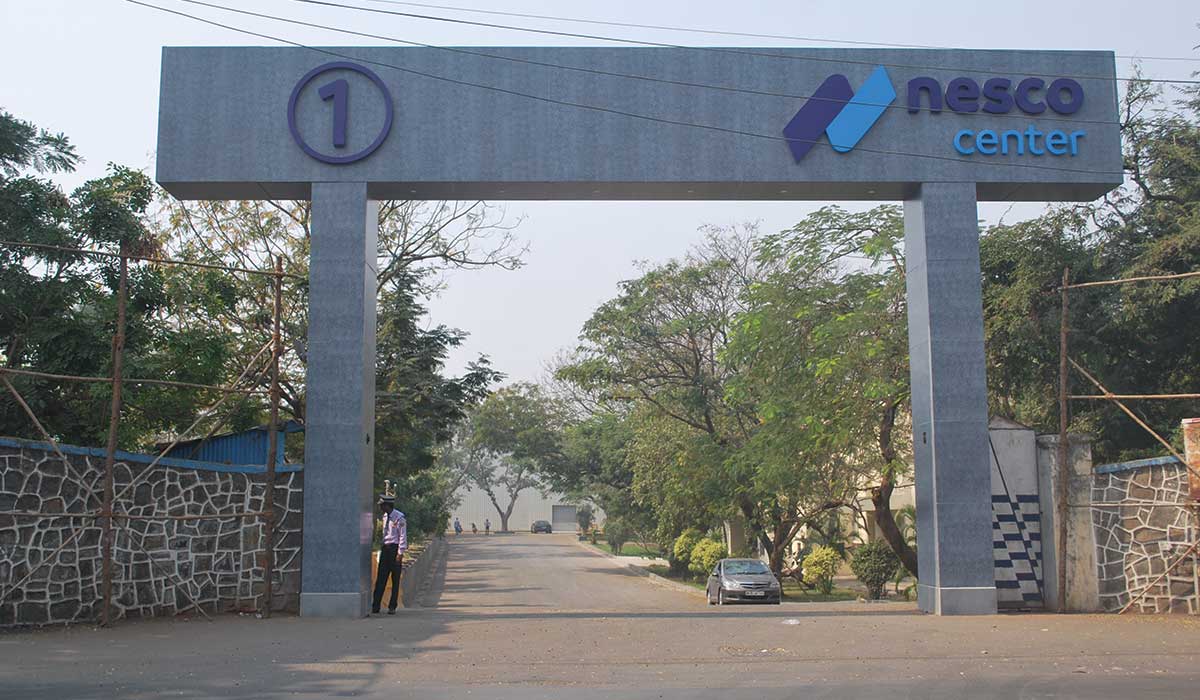 The new Retrofit façade for NESCO complex gates in solid aluminum
The new Retrofit façade for NESCO complex gates in solid aluminumThis project in NESCO complex at Goregaon, Mumbai, has 3 entrance gates retrofitted with 2mm stone finish percolated solid aluminum sheets supplied by Saflow. As a vibrant exhibition and conference venue in the city, the gates were subjected to a lot of wear and tear. Solid aluminum was chosen as it scored far better than ACP or any other material, even though the threat of fire was not paramount in this case. The entire work was design built by Habitat n Skins, keeping the hidden structural frame intact and under guidance of the project team from NESCO.
Solid aluminum is 100% fire-proof with its entire assembly. We can safely say that as there is no component that will burn, even though it will melt in higher temperatures. The most important aspect of fire spread is fire propagation, and aluminum façade comes out a winner. Here, I would like to say that stainless steel facades perform the best in the event of a fire because of its high melting point, but aluminum scores better in a cost to benefit ratio in comparison to all metal facades.
Buildings need to create long lasting value for which most of the responsibility lies on the shoulders of the façade industry. If the façade is designed in a way that it will appeal to future generations as well, then we have a winner. Solid aluminum is a step in that direction
harishgupta@habitat-n-skins-com


